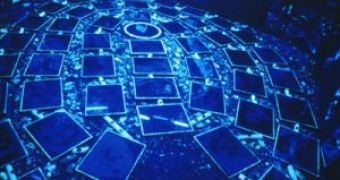Lighting without power would mean smaller energy bills. A wonderful dream, isn't it?
Or not just a dream, as a Japanese team developed phosphorescent materials that shine with the whole visible specter and can even produce white light.
The researchers from Ryukoku University, Kyoto, say the new material could be employed to deliver lighting and clearly readable signs in emergencies without any power consume, which is something very rare.
The International Commission on Illumination (CIE) has pointed out that buildings should be fitted with emergency lighting and signs that function powerless. "New York and Tokyo are considering the idea," said Mitsunori Saito, one of the researchers.
The new material is special and more attractive, being able to emit light across the whole visible spectrum. "Conventional blue or green phosphors create an eerily uncomfortable illumination environment in which people feel anxiety. They also give poor contrast when used for signs which is a problem when people need to find exits through heavy smoke or dust," said Saito.
Warmer colors like orange and red will produce more readable signs. "Combining red, green, and blue colors even enables us to create white light, which may provide more natural illumination," said Saito.
Phosphorescent materials function by absorbing light when exposed to a light source and emitting the stored light over long time periods: a 5-minute charge from a fluorescent lamp is enough to make them glow for roughly three hours.
Effective blue and green phosphorescent materials have been discovered quite some time ago, but until this research, red was more reluctant, lasting just minutes instead of hours. The Japanese team surpassed the problem by adding red dye to green and blue phosphors.
The red dye molecules absorb light emitted by the base phosphor but emit it red. Various red dye percentages added to green or blue phosphors produce a large range of visible colors. "Using glow-in-the-dark is not a current strategy for emergency lighting but I can see the appeal," said Roy Webb at Heriot-Watt University, UK. "Emergency lighting does not need to be very bright because the human eye adapts well to dim conditions," he points out.
The Japanese team also looks for other applications for their technology, such as night-light lamp shades that glow the whole night.

 14 DAY TRIAL //
14 DAY TRIAL //